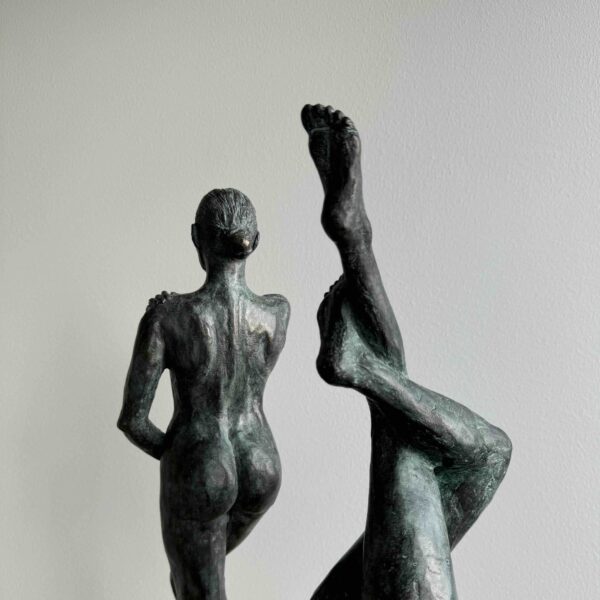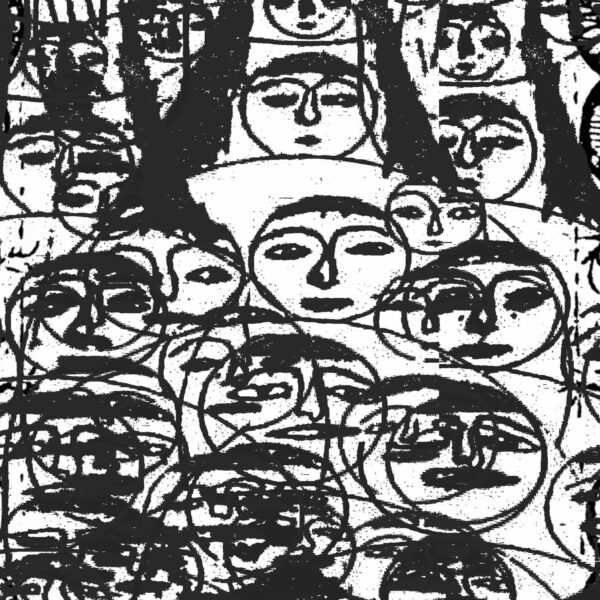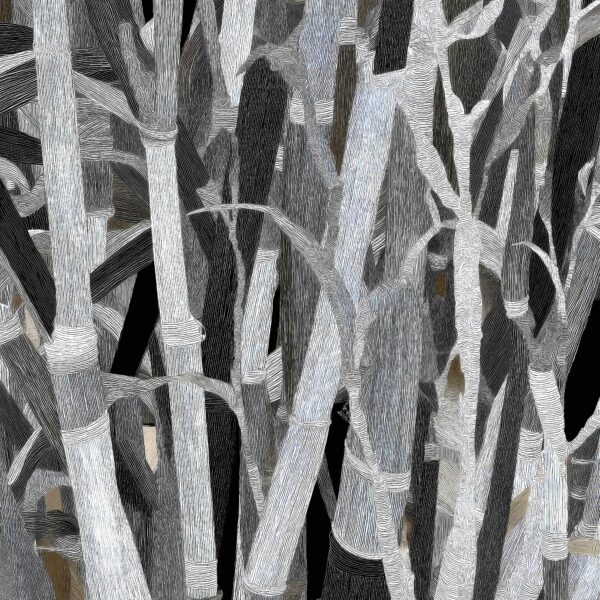MONO//CHROME — Light, Code, and the Infinite Plane
In partnership with InfiniteInk, AOTM presents “MONO//CHROME,” a curated auction uniting eight Tezos-native artists who push a single color beyond its limits—transforming minimalism into movement, silence into code, and the monochrome into a living field of light.
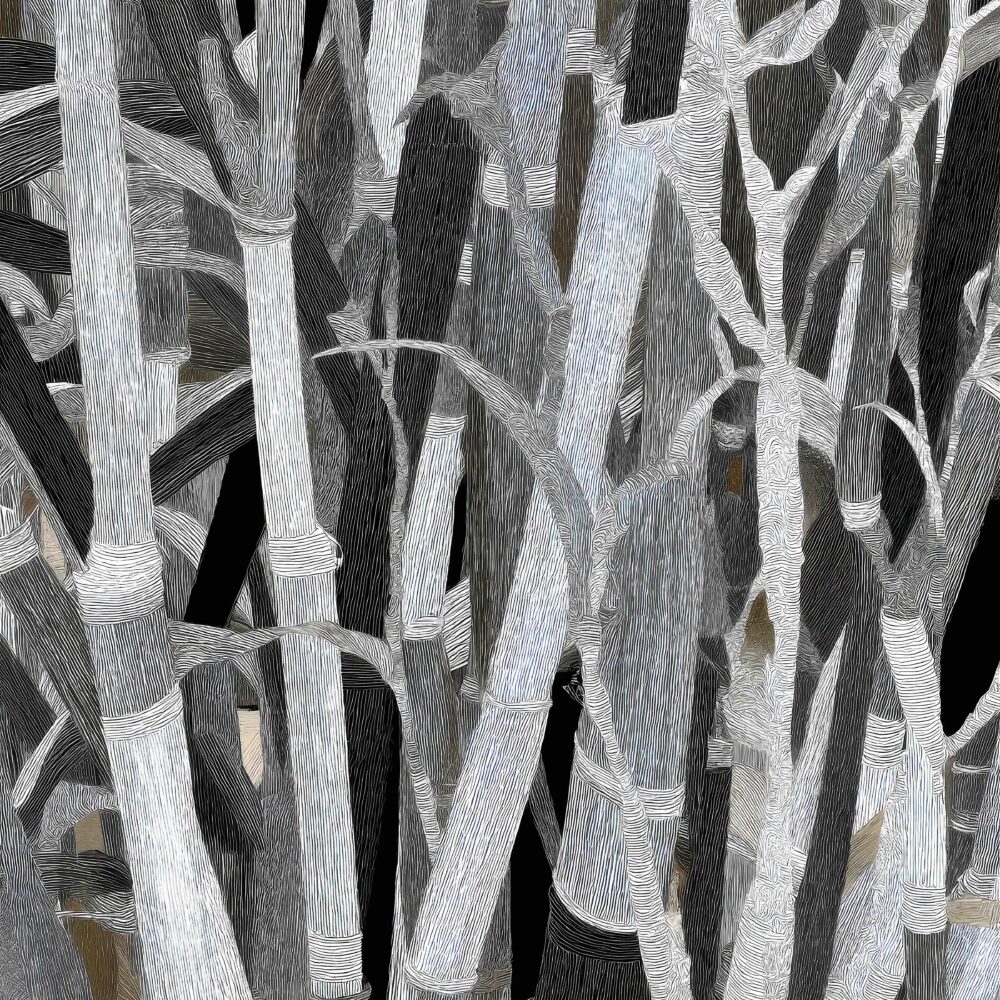
The Legacy of the Monochrome
Since Kazimir Malevich unveiled his Black Square in 1915, the monochrome has haunted art like a ghost of pure possibility. To reduce painting to one field of color was to challenge the very definition of art—its image, its subject, its depth. Later came Ad Reinhardt’s black-on-black canvases, Yves Klein’s intoxicating ultramarine blue, Robert Ryman’s white abstractions—each reducing form toward transcendence, inviting the viewer to see not “nothing,” but everything stripped bare.
In the digital age, that radical gesture returns with new stakes. Here, light itself replaces pigment, code replaces brushstroke, and the surface—the luminous screen—breathes with impermanence. The monochrome, once still and silent, now flickers, loops, and reacts. Its purity becomes plural.
MONO//CHROME reimagines this lineage through the digital body of the blockchain, where time, motion, and permanence converge. Across eight works—each a unique meditation on color, tone, and constraint—the exhibition becomes a dialogue between past and future, matter and machine.
Anna Condo — “NEW NATURE [Bamboo]”
In NEW NATURE [Bamboo], Anna Condo captures the quiet geometry of life. Her grayscale composition resembles a forest of inked reeds—delicately structured yet dense with organic rhythm. Each line pulses with an understated vibration, like breath within stillness. Condo’s monochrome palette reveals an unexpected emotional range: light and shadow weave a meditative tension between growth and decay.
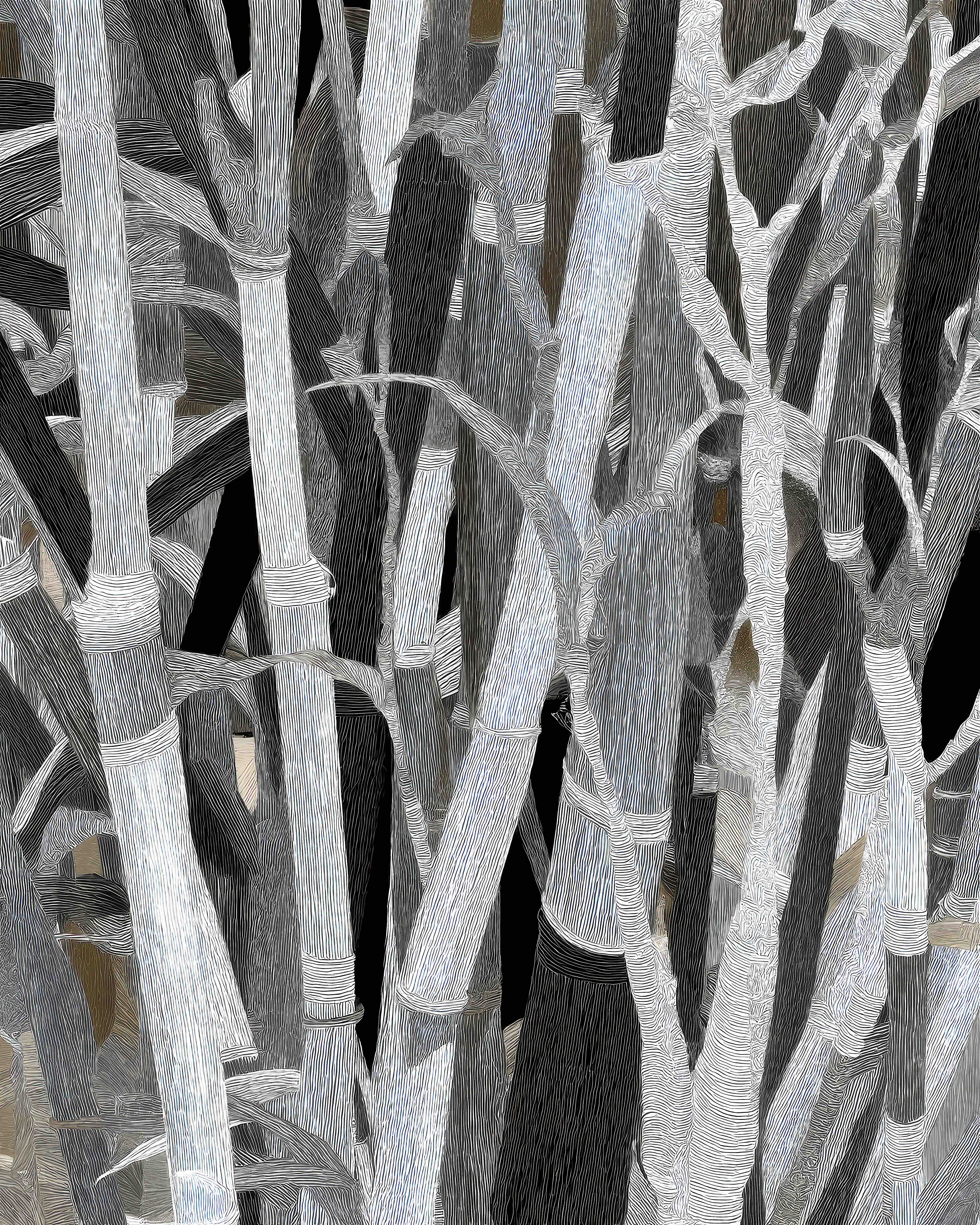
Evoking the spiritual clarity of Agnes Martin and the subtle tactility of Japanese sumi-e, Condo brings nature into digital form without losing its pulse. Her lines feel both drawn and coded—bridging the organic and the algorithmic. In this restrained spectrum of blacks and silvers, life reasserts itself as pattern, as persistence, as quiet grace amid the mechanical.
C3 — “Conspiracy Theory”
C3’s Conspiracy Theory transforms the monochrome into a stage for social critique. Against a black void, mechanical silhouettes gather like digital voters—part algorithm, part congregation. Their white outlines recall a crowd diagrammed by a machine that’s learned to mimic democracy.
By stripping color away, C3 underscores a chilling truth: that ideology today often manifests as code. The stark interplay of black and white evokes early Constructivist propaganda posters and Bauhaus rationalism—but here, the message collapses under its own repetition. The title itself becomes prophecy: algorithmic systems have learned to “vote,” and we have learned to obey them.
In the lineage of Malevich and Rodchenko, C3 wields minimal form as maximal protest—a distilled rebellion encoded in light.
Pamilo Ceirone® — “MASHINA ROTZ®”
If Condo and C3 meditate on structure and system, Pamilo Ceirone explodes them both. MASHINA ROTZ® is a jubilant field of pink—a riotous, surreal landscape of symbols, arrows, and creatures caught mid-gesture. Within its single hue, Ceirone unlocks an entire language of play.
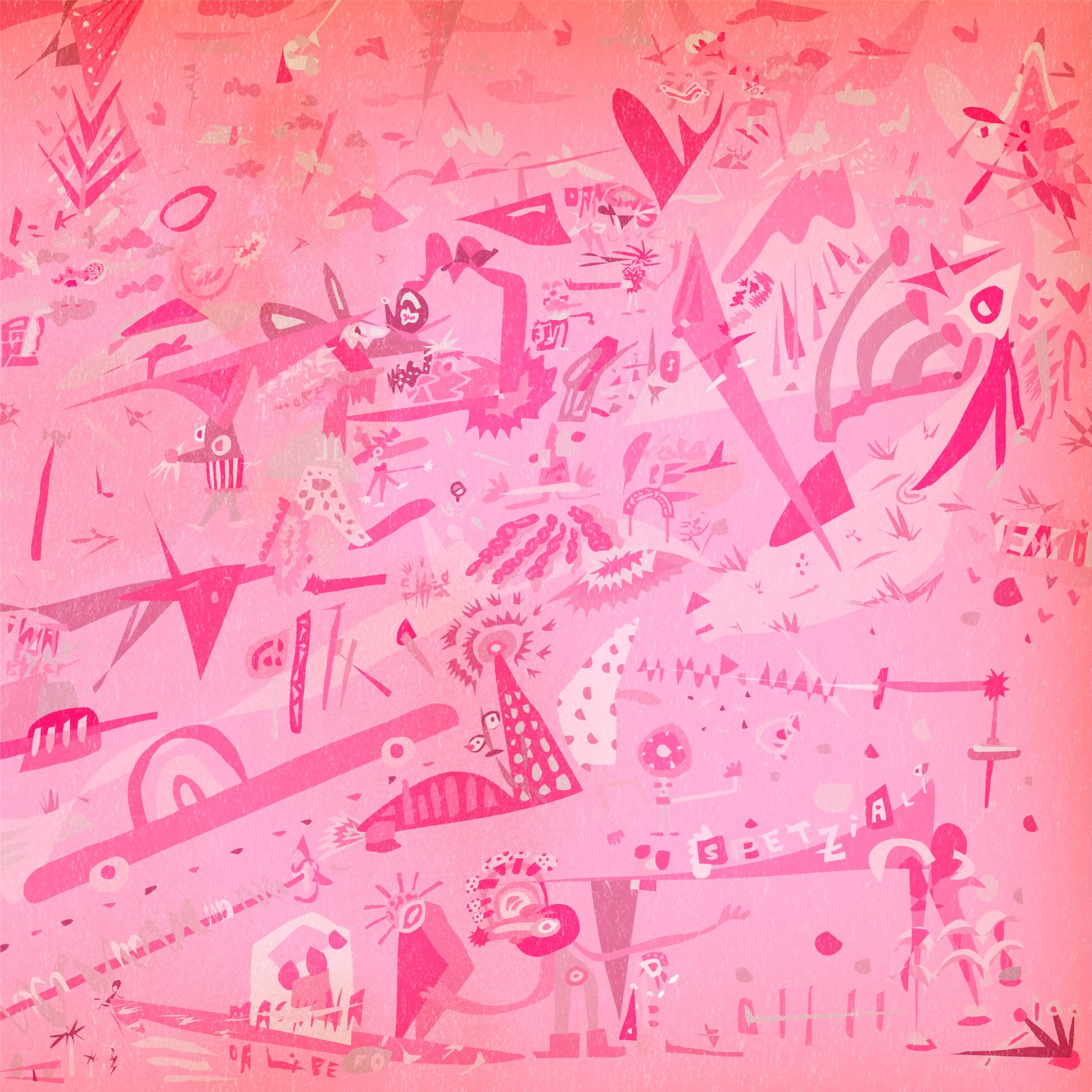
His monochrome is not restraint but release—channeling the free-associative absurdism of Klee and Miró through the palette of digital candy. Every form hints at narrative: a cosmic engine, a dancing creature, a map of emotional circuitry. Yet within the humor and chaos lies tenderness—a search for connection amid noise.
In Ceirone’s hands, the monochrome becomes a theater of memory and imagination, proof that limitation often amplifies expression rather than containing it.
Rebecca Rose — “Thalassa Whale Fishery”
Rebecca Rose’s Thalassa Whale Fishery is a cinematic poem rendered in sepia and shadow. Her animated collage unfolds like a lost myth from a parallel frontier—a Western of spiritual reckoning, where cowboys lasso whales from desert sands. Through her intricate 3D layering, Rose re-imagines 19th-century Americana as ecological parable: civilization’s hunger devouring the ocean it once worshiped.
The work’s muted tone recalls early photography and the etching traditions of Doré and Piranesi. Yet its movement—driven by sound, rhythm, and the shimmer of coded light—transforms nostalgia into critique. The brown monochrome becomes a moral atmosphere, a warning sung through dust: that conquest, however gilded, always ends in ruin.
As in her DeepCuts series, Rose collapses time and medium, making the digital collage not just an image, but an ecosystem of consequence.
Sabato Visconti — “Noise Show Headliner (cp_26)”
Sabato Visconti’s Noise Show Headliner (cp_26) translates the philosophy of glitch into the language of the monochrome. Rendered in pixelated grayscale, the looping GIF shows a lone figure at a mixing table, surrounded by brick walls and speakers—a performer without an audience, lost in the hypnotic hum of digital decay.
Created using an emulated Amiga computer, Visconti channels the aesthetic of early computing into a meditation on obsolescence and persistence. The image evokes Nam June Paik’s analog noise and the cyberpunk intimacy of net.art’s early pioneers.
Here, the monochrome hums—not silent like Reinhardt’s black, but electric, alive, uncontainable. Within the absence of color, Visconti finds vibration: the sound of pixels dreaming in grayscale.
Strano — “Racing Against Oneself”
Montreal-based artist Strano’s Racing Against Oneself plunges into the architectural sublime. His looping animation of glowing staircases and abstract corridors resembles an infinite temple built of light and shadow. The viewer feels suspended within an Escherian structure that folds upon itself—ascending and descending without end.
Rendered in foggy gradients of gray, the piece resonates with the spatial mysticism of James Turrell and Anthony McCall, yet filtered through the logic of the digital engine. The light here is not divine—it is simulated, recursive, endless.
The title anchors this metaphysical architecture in human psychology. To “race against oneself” is to exist within the loop of modern life, where progress and reflection blur. In this darkness, Strano reminds us that illumination is not escape but awareness.
uyo — “Layered Protocol”
uyo’s Layered Protocol reimagines monochrome as a battleground of form and irony. The work—a black-and-white fever dream populated by cartoonish mascots and monstrous hamburgers—plays like a Dadaist defense mechanism for the blockchain age. “They came to scam—got grilled instead,” the artist writes.
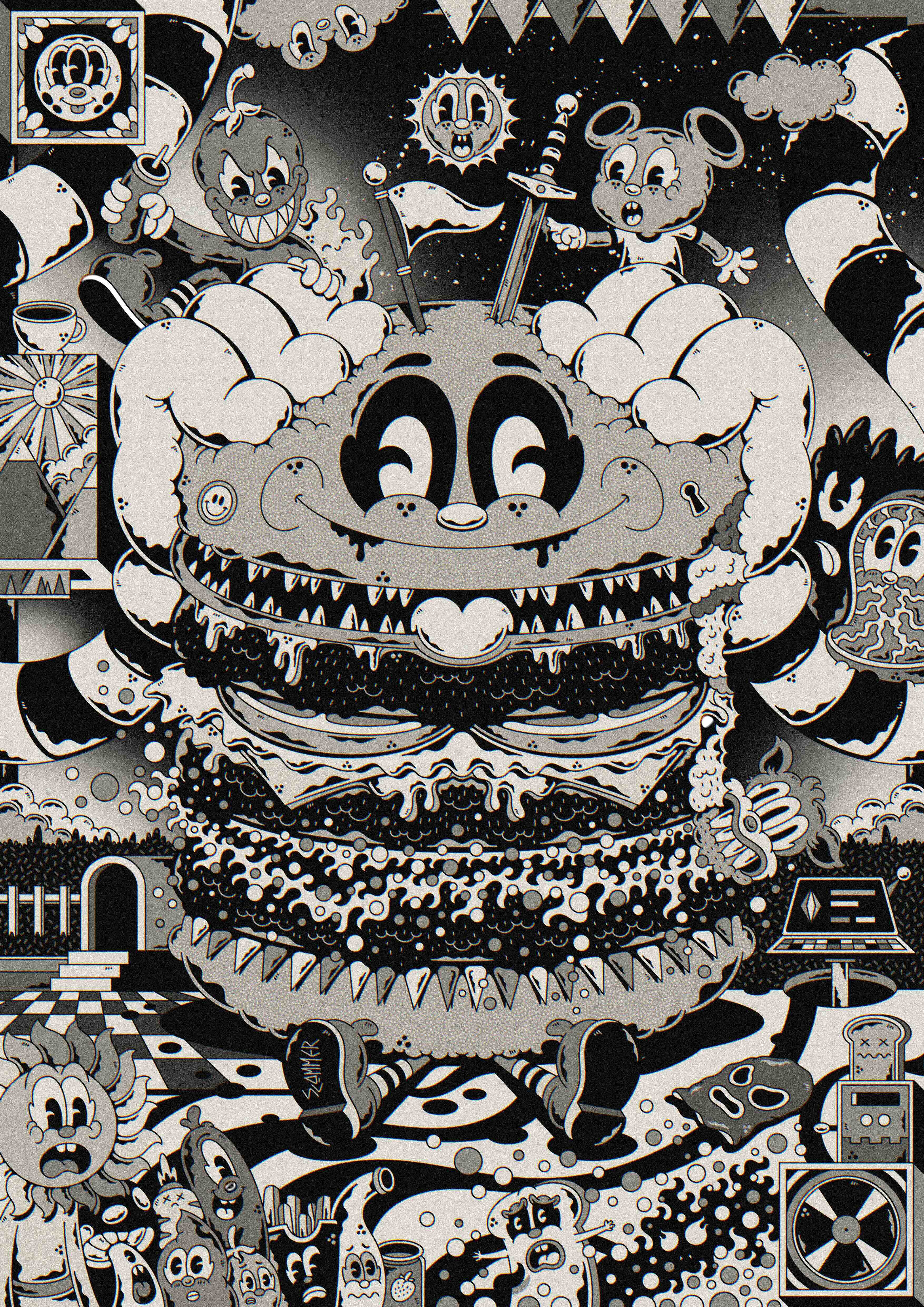
This is monochrome as satire, echoing the absurdist humor of Philip Guston’s late works and the post-internet grotesques of early meme culture. uyo’s intricate halftone shading recalls 1930s comic printing, while the digital crispness turns nostalgia into critique.
Behind the laughter lies a subversive equilibrium: in stripping color, uyo sharpens contrast—not only visually but morally. His cartoon cosmos becomes a monochrome morality play, where capitalism and creativity wrestle beneath the same grayscale sky.
Xuoxo — “Out of Hibernation”
The final work, Xuoxo’s Out of Hibernation, moves from the mechanical to the ethereal. Across its short loop, gradients of white and green unfold like a breathing organism—awakening from the digital frost. The motion is subtle yet profound: life returning through light.
Xuoxo’s minimalism recalls the ambient meditations of Hiroshi Sugimoto and the chromatic experiments of Dan Flavin. Yet the work’s digital execution situates it firmly in the now, where hue becomes signal and code becomes rhythm.
In this serene abstraction, the monochrome transcends austerity—it becomes a state of being. Out of Hibernation ends the exhibition not with closure, but renewal. The single color, reborn through motion, reminds us that even the simplest form can pulse with infinite complexity.
Light as Language
Across these eight works, MONO//CHROME proves that limitation breeds liberation. From Anna Condo’s living lines to Xuoxo’s glowing ascension, each artist reclaims the monochrome not as a minimalist void but as a maximal field—where memory, system, humor, and spirit coexist.
The historical monochrome was once a statement of purity; the digital monochrome is a statement of persistence. Light, endlessly rendered, becomes the new pigment. Code becomes gesture. The artist, once bound by material, now sculpts time.
In this sense, MONO//CHROME is less about color than about consciousness—how digital artists, inheriting a century of minimalism, now use its silence to speak.
As Malevich sought the “zero point of painting,” these artists find the zero point of light. In the stillness of a screen, in the hum of the blockchain, the monochrome lives again—flickering, breathing, and infinite.
